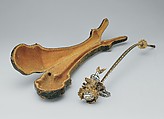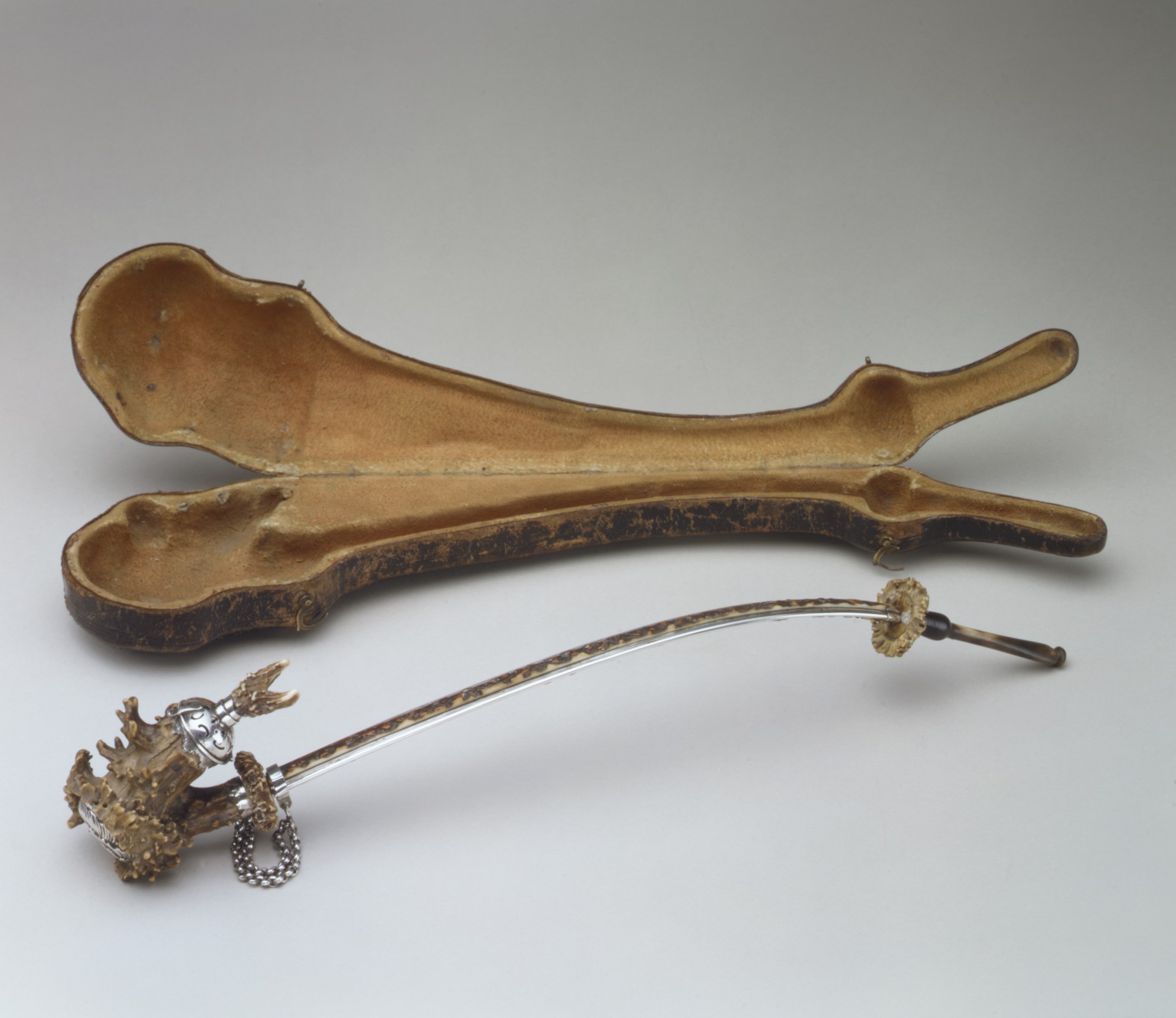Tobacco pipe with case
The deformed, roselike base of a roebuck antler was mounted in silver to form this pipe's bowl. Remarkable is the use of the Y-shaped prong finial that teasingly evokes smoke coming out of the perforated silver lid. The arched silver tube decorated with applied antler was inspired by an oriental hookah. The bowl's exotic appearance resembles the ornamental Chinese scholars' rocks and the flamboyant rock formations found in Chinese gardens, both widely admired in the West. The silver rocaille mounts echo and complement the antler deformations, thus exemplifying the interplay of art and nature. In eighteenth- century Europe the hunting of stags was a strongly guarded, aristocratic privilege. Therefore this sublime oddity was most likely made for a princely curiosity cabinet (Kunstkammer), a room where such objects could be handled and studied from every angle. Tobacco was considered to have aphrodisiac powers, and pulverized stag horn was thought to enhance strength. These attributes—together with the shell shape of the bowl's silver bottom, which refers to Venus, the goddess of love—could offer opportunities for initiating provocative conversations. The pipe is a Rococo document par excellence, both for its taste of the bizarre and for the mounting of highly treasured natural substances with precious metal.
Due to rights restrictions, this image cannot be enlarged, viewed at full screen, or downloaded.
This artwork is meant to be viewed from right to left. Scroll left to view more.



